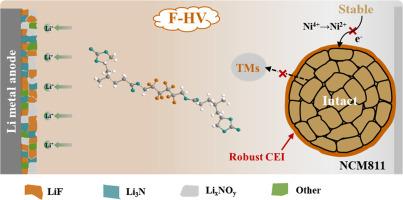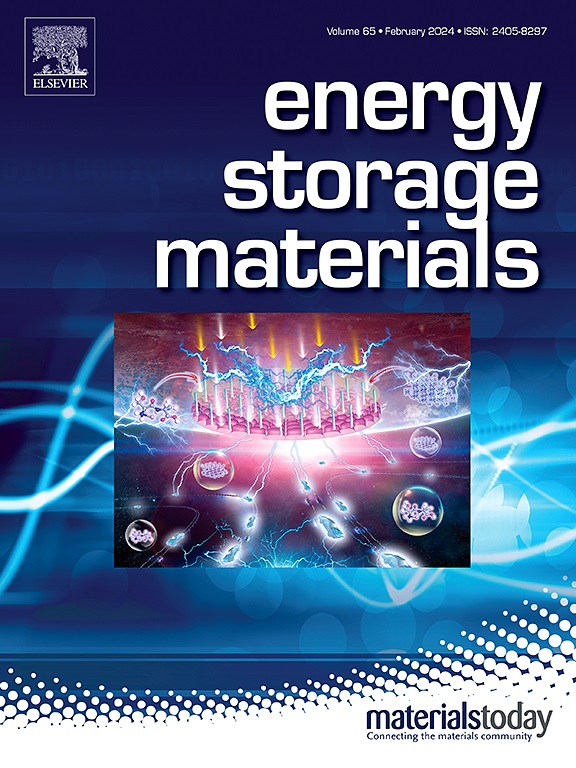Fluorine and carbonate regulated nonflammable polymer electrolyte for ultrastable high-voltage Li metal batteries
IF 18.9
1区 材料科学
Q1 CHEMISTRY, PHYSICAL
引用次数: 0
Abstract
Polymer electrolytes are promising electrolytes for solid-state Li metal batteries owing to their low flammability, non-leakage, easy processing and good flexibility. However, low ionic conductivity and inferior oxidation stability of conventional polymer electrolytes hinder their application in high-voltage Li metal batteries. Herein, we develop a fluorine and carbonate regulated nonflammable polymer electrolyte (F-HV) for high-voltage Li metal batteries. Fluorinated main chains endow F-HV with high oxidative stability (4.9 V vs. Li+/Li) and promote the formation of robust LiF-rich interfaces, effectively enhancing the interfacial stability of LiNi0.8Co0.1Mn0.1O2 (NCM811) cathodes and Li metal anodes. Carbonate side chains facilitate dissociation and conduction of Li+, effectively enhancing the ionic conductivity to 1.97 mS cm−1. F-HV possesses excellent flame resistance and favorable dimension stability up to 200 °C. F-HV markedly boosts the performance of Li||NCM811 and Li||LiFePO4 (LFP) cells, which exhibit an ultralong cycle life of 3000 cycles with an impressive capacity retention of 86.3%. F-HV also enables Li||NCM811 cells with enhanced cycle stability at high temperature (60 °C) and high voltage (4.5 V). This work provides an effective strategy for achieving high-performance solid-state Li metal batteries.


求助全文
约1分钟内获得全文
求助全文
来源期刊

Energy Storage Materials
Materials Science-General Materials Science
CiteScore
33.00
自引率
5.90%
发文量
652
审稿时长
27 days
期刊介绍:
Energy Storage Materials is a global interdisciplinary journal dedicated to sharing scientific and technological advancements in materials and devices for advanced energy storage and related energy conversion, such as in metal-O2 batteries. The journal features comprehensive research articles, including full papers and short communications, as well as authoritative feature articles and reviews by leading experts in the field.
Energy Storage Materials covers a wide range of topics, including the synthesis, fabrication, structure, properties, performance, and technological applications of energy storage materials. Additionally, the journal explores strategies, policies, and developments in the field of energy storage materials and devices for sustainable energy.
Published papers are selected based on their scientific and technological significance, their ability to provide valuable new knowledge, and their relevance to the international research community.
 求助内容:
求助内容: 应助结果提醒方式:
应助结果提醒方式:


